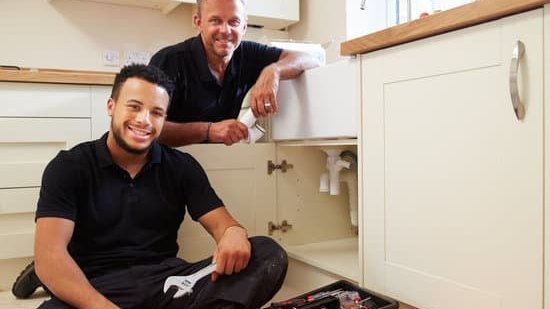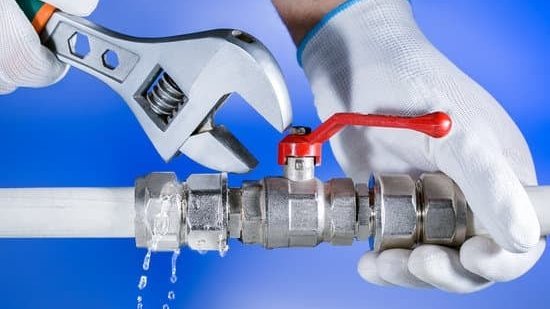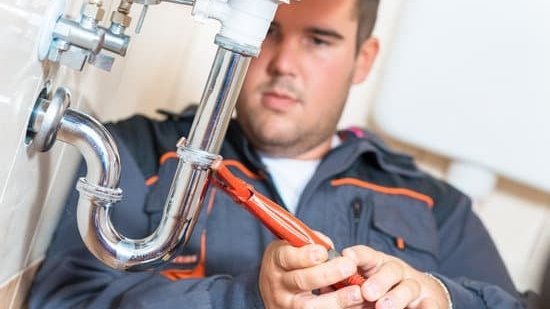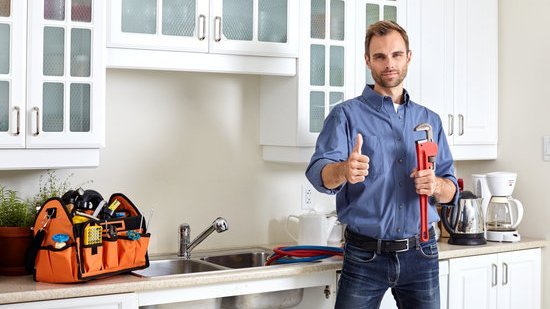Are you struggling to remove plumber’s putty from your plumbing fixtures? Don’t worry, we’ve got you covered. In this article, we will guide you through the step-by-step process of removing plumber’s putty effectively.
Whether you’re a DIY enthusiast or a homeowner in need of some plumbing maintenance, this article is for you. Removing plumber’s putty can be a tricky task, but with the right techniques and tools, you can easily restore your plumbing fixtures to their original condition. So let’s dive in and learn how to remove plumber’s putty like a pro.
The most important facts in a nutshell
- Plumber’s Putty is a versatile material used in plumbing for various purposes.
- It is applied by hand and can be removed using different methods such as using bare hands, a knife, soapy water, mineral spirits, or a heat gun.
- Plumber’s Putty is compared to silicone and related articles on DIY plumbing are provided.

What Is Plumber’s Putty?
In the vast realm of plumbing, there exists a humble yet indispensable tool known as plumber’s putty. This unassuming compound, crafted from a delicate blend of linseed oil, powdered limestone, and various additives, possesses the extraordinary ability to fashion watertight seals . With its malleable nature, it effortlessly conforms to the contours of sinks, toilets, and other fixtures, staunchly repairing leaks and staunching the relentless tide of water seepage.
In the grand tapestry of sealants, plumber’s putty stands in a league of its own. Its cost-effective nature and widespread availability render it a beacon of accessibility, readily procured from the hallowed halls of hardware stores. Remarkably, its application requires no specialized tools, bestowing upon both seasoned professionals and eager DIY enthusiasts the power to wield its transformative properties.
Yet, as with all things in life, even the mighty plumber’s putty possesses its limitations. It bears a cautionary note, warning against its use on delicate surfaces such as plastic or marble, for it harbors the potential to wreak havoc and inflict unintended harm. Furthermore, it must be acknowledged that this miraculous substance, while effective, is not a permanent panacea.
Over time, it may necessitate replacement, as the passage of days and the ceaseless flow of water take their toll. In the grand tapestry of plumbing, however, plumber’s putty remains an unwavering pillar of reliability and a beloved choice for both seasoned plumbers and humble homeowners alike. Its versatility, simplicity of use, and cost-effectiveness have elevated it to a place of honor, where it continues to serve as a steadfast companion in the ceaseless battle against leaks and water’s relentless persistence.
Common Uses for Plumber’s Putty
Plumber’s putty, an essential tool for any plumbing job, proves invaluable in fixing leaks and creating watertight seals in pipes and faucets. Its versatility extends to sealing sink drains and faucets, safeguarding against water damage. Moreover, this dependable and convenient tool serves to secure toilet bowls, preventing both movement and leaks.
Whether you’re a DIY enthusiast or a seasoned professional plumber, plumber’s putty remains an indispensable asset in your plumbing endeavors.
What’s In Plumber’s Putty?
Plumber’s putty, a widely used plumbing sealant, is created through a combination of linseed oil, clay, and filler materials. This innovative substance possesses the remarkable ability to be molded and applied with ease. Its chemical composition grants it the power to effectively seal plumbing fixtures, maintaining flexibility and resistance to water and household chemicals.
Nonetheless, it is crucial to dispose of plumber’s putty responsibly to prevent any harm to the environment. While plumber’s putty is a dependable sealant for numerous plumbing needs, it is essential to remain mindful of its environmental implications.

Removing plumbers putty: A hassle-free guide for a leak-free finish
- Plumber’s putty is a versatile material commonly used in plumbing projects.
- It is a soft, moldable substance that is applied to create a watertight seal between plumbing fixtures and surfaces.
- Plumber’s putty is often used for tasks such as sealing sink drains, faucet bases, and showerheads.
How Do You Apply A Plumber’s Putty?
Creating a strong seal with plumber’s putty requires a few simple steps. Start by clearing away any old putty or debris in the area. Then, thoroughly clean the surface with a mild detergent or cleaner.
Let it dry completely before moving on. Next, take a small amount of putty and shape it into a thin rope. Press the putty onto the surface, making sure it makes full contact.
Smooth it out with your fingers or a putty knife to remove any air bubbles. Remember, don’t apply too much pressure. Finally, allow the putty to cure according to the manufacturer’s instructions.
Once it’s fully cured, you’ll have a watertight and long-lasting seal.
If you’re wondering about the proper height for kitchen sink plumbing rough-in, check out our article “Kitchen Sink Plumbing Rough-In Height” for all the details and guidelines you need.
1. With Bare Hands
Engaging in the task of removing plumber’s putty can be a delicate endeavor. While it may initially seem tempting to tackle this task with bare hands, the potential risks involved should not be underestimated. The chemicals present in the putty have the potential to cause skin irritation or even burns.
Thankfully, there are alternative methods available that can effectively remove the putty while minimizing the risk to your skin. One such method involves using a knife or utility blade to carefully scrape off the putty without direct contact. It is crucial, however, to exercise caution and take necessary precautions to prevent any potential injuries.
Another approach involves applying soapy water to the putty. This aids in the dissolving and loosening of the putty, making it easier to remove. It is important to thoroughly rinse off any remaining soapy water to ensure a clean finish.
For more stubborn instances, mineral spirits or paint thinners can be employed. These substances effectively dissolve the putty, easing the removal process. However, it is vital to handle these substances with care and adhere to all safety measures.
Utilizing a heat gun is yet another effective solution. By heating the putty, it becomes softer and more manageable to scrape off. It is imperative, though, to exercise caution to avoid any potential burns or accidents.
Regardless of the method chosen, it is crucial to prioritize the protection of your skin. Wearing gloves and long sleeves is highly recommended to minimize direct contact between the putty and your skin. After completing the task, thoroughly washing your hands will remove any residue and help prevent any potential skin irritation.
By adhering to these best practices , you can confidently and safely remove plumber’s putty without the need to rely on your bare hands.

2. Using A Knife Or Utility Blade
Unleashing the Elegance of the Knife: A Masterful Approach to Removing Plumber’s Putty In the intricate dance of removing plumber’s putty, the knife or utility blade emerges as a graceful partner. Yet, one must tread with caution, for safety and desired outcomes require adherence to the proper technique. Begin this delicate endeavor by ensuring you wield a sharp and suitable knife or utility blade.
Remember, a dull blade can sabotage progress and invite calamity . Gently score the edges of the putty, creating a beacon of guidance. With precision, insert the blade and delicately sever the putty in incremental triumph .
Yet, dear reader, let not complacency cloud your senses, for lurking risks demand your attention. Don the armor of protective gloves, shielding yourself from potential harm. And, oh, be wise!
Guard the surface beneath the putty, lest your handiwork inadvertently incurs a grievous wound. To eradicate the putty in its entirety, persist in your cutting and scraping endeavors until every vestige is vanquished. Patience, my friend, is a virtue indispensable in this pursuit, for haste begets folly and misfortune.
Embrace the artistry of technique, the hymn of safety, and the symphony of time. In harmonious unity, the knife or utility blade shall grant you mastery over the removal of plumber’s putty. Devote yourself to this endeavor, for the rewards shall be bountiful, and the results, sublime.
Plumber’s putty can be stubborn to remove, but with the right techniques, it can be done easily. In this video, you’ll learn step-by-step instructions on how to remove plumber’s putty effectively and efficiently. Say goodbye to residue and hello to a clean surface!
3. Using Soapy Water
Bid farewell to that stubborn plumber’s putty with a simple and affordable solution: soapy water. This powerful elixir effortlessly dissolves and loosens the putty for a hassle-free removal process. Here’s the game plan:
1. Combine warm water and a few drops of dish soap in a bowl to create a lubricating concoction. This magical mixture will break down the putty with ease.
2. Armed with a sponge or cloth, generously apply the soapy water to the affected area. Gently massage the solution into the putty, allowing it to seep in and work its magic for a few minutes.
3. Once the putty has soaked, grab a soft-bristle brush or sponge and scrub away. The soapy water will work its wonders, loosening the putty and making removal a breeze. Rinse the area thoroughly with clean water to bid adieu to any lingering soap residue.
Rest assured, using soapy water is a tried-and-true method for banishing plumber’s putty. Just remember to follow the proper technique and exercise a touch of patience. In no time, you’ll be celebrating your victory over that stubborn putty.
4. Using Mineral Spirits And Paint Thinners
In order to effectively remove plumber’s putty, consider utilizing mineral spirits or paint thinners. By directly applying these substances to the putty, you can allow them to soak for a brief period of time. This process will effectively dissolve the putty, making it easier to eliminate.
For your own safety, it is crucial to work in a well-ventilated area and wear protective gloves. Additionally, to avoid inhaling any fumes, consider wearing a mask or ensuring proper airflow. To successfully dissolve and eliminate the putty, generously apply the spirits or thinner to the affected area.
Allow it to sit for a few minutes, allowing the substance to penetrate and dissolve the putty. Subsequently, gently scrub away the softened putty using a scraper or cloth. If necessary, repeat this process until all traces of the putty have been eradicated.
Remember to dispose of the used spirits or thinner in accordance with hazardous waste guidelines. Always adhere to local regulations regarding proper disposal methods. While utilizing spirits and thinners is an efficient approach to removing plumber’s putty, it is important to exercise caution and prioritize safety measures to safeguard both yourself and the environment.

5. Using A Heat Gun
When it comes to swiftly removing plumber’s putty, a heat gun is your trusty ally. However, ensuring your safety is of utmost importance. Don’t forget to don protective gloves and goggles, and pick a well-ventilated space for your task.
Apply heat evenly, beginning a few inches away and gradually getting closer. Just remember not to hold the gun too near or for an excessive duration. As the putty softens, you can effortlessly eliminate it using a plastic scraper or putty knife.
Always prioritize safety above all else!
Effective Methods for Removing Plumber’s Putty – Tabelle
| Method | Description | Difficulty Level | Effectiveness | Pros | Cons |
|---|---|---|---|---|---|
| Bare Hands | Removing plumber’s putty by manually picking and pulling it off with bare hands | Easy | Moderate | Requires no additional tools, easily accessible | Can be messy and time-consuming, may leave residue |
| Knife or Utility Blade | Using a sharp knife or utility blade to scrape off the plumber’s putty | Moderate | High | Precise removal, faster than bare hands | Requires caution to avoid damaging surfaces, may need to be repeated for stubborn putty |
| Soapy Water | Applying a soapy water solution to soften the plumber’s putty, making it easier to remove | Easy | Low to Moderate | Non-toxic and readily available, can be used on various surfaces | May require multiple applications, effectiveness varies depending on putty type |
| Mineral Spirits and Paint Thinners | Using chemical solvents like mineral spirits or paint thinners to dissolve and remove plumber’s putty | Moderate to Difficult | High | Fast and efficient, works on stubborn putty | Strong fumes, requires proper ventilation and caution while handling chemicals |
| Heat Gun | Applying heat using a heat gun to soften and loosen the plumber’s putty for easier removal | Moderate to Difficult | High | Quick and effective, ideal for larger areas | Requires careful handling of heat gun, potential for surface damage if not used properly |
| Pro Tips for Plumber’s Putty Removal | Expert tips and tricks for removing plumber’s putty effectively and efficiently | N/A | N/A | Offers additional insights and techniques for successful removal | N/A |
1/3 Pro Tips for Plumber’s Putty Removal
Mastering the Art of Removing Plumber’s Putty Unraveling the secrets to effortlessly eliminating plumber’s putty is a skill worth acquiring. Begin by delicately maneuvering a plastic scraper to dislodge and extract the putty, ensuring the surfaces remain unharmed. Employing the warmth of a hairdryer can also render the putty more pliable, facilitating its effortless removal.
In cases where the putty proves tenacious, a solution of vinegar can come to the rescue. Mixing equal parts vinegar and water, gently apply this elixir, allowing it to permeate before gently scraping away the softened putty. Armed with these invaluable insights, you can rid yourself of putty with efficiency and utmost care, without eliciting any harm.
2/3 Plumber’s Putty vs Silicone
In the vast realm of sealants for plumbing, two prominent choices emerge: plumber’s putty and silicone. Plumber’s putty, renowned for its unwavering strength and enduring capabilities, stands as a steadfast option. On the other hand, silicone, though versatile, may demand more frequent replacements.
When it comes to application and removal, plumber’s putty reigns supreme in simplicity, while silicone poses a formidable challenge once it has cured. Moreover, plumber’s putty graciously accommodates various plumbing materials, while silicone may necessitate additional primers or adhesives. Thus, in your quest for the perfect sealant, consider the paramount aspects of longevity, ease of use, and compatibility, for they shall guide you wisely in selecting between these two formidable contenders.
If you’re experiencing toilet bubbling and a shower that’s not draining properly, check out our article on “Toilet Bubbling and Shower Not Draining” to learn how to fix these common plumbing issues.

Did you know that plumber’s putty has been used for centuries? It dates back to ancient Egypt, where a similar substance made from clay and vegetable oils was used to seal plumbing fixtures. So next time you’re using plumber’s putty, remember that you’re continuing a long-standing tradition in plumbing!
DIY Guide To Replacing Your Toilet
Embark on a transformative journey as you bid farewell to your worn-out lavatory and embrace the exhilarating world of do-it-yourself home improvement. The stars align in your favor, dear reader, for within the pages of this guide lies the key to replacing your toilet and bidding adieu to the tenacious grip of plumber’s putty. Plumber’s putty, a steadfast ally in the battle against leaks, forms an impermeable bond between your porcelain throne and the unforgiving floor.
Alas, with the passage of time, this once-malleable substance may harden, making its removal a formidable task. Equip yourself with the necessary tools: a trusty putty knife or a humble plastic scraper, an indispensable wrench or pliers, and a trusty bucket or a comforting towel. Now, let us unveil the steps that will lead you towards toilet liberation.
Begin by shutting off the water supply, bidding farewell to its life-giving flow. With a gentle flush, empty the tank, freeing it from its burdens. Sever the ties that bind, disconnecting the water supply line.
The nuts or bolts that anchor your toilet to the floor must be released from their grip. Handle this delicate operation with utmost care, mindful of the stubborn putty that clings. To vanquish the putty’s hold, wield your putty knife or plastic scraper with finesse.
Proceed with caution, for the sanctity of your toilet and floor must be preserved. Once conquered, cleanse any remnants with a damp cloth or sponge, restoring purity to the battleground. Remember, brave soul, to don the armor of gloves and, if you so choose, the mask of protection when engaging in combat with the formidable plumber’s putty .
With these sacred rituals observed and precautions heeded, you stand poised to usher in a new era within your lavatory. May fortune favor your endeavors, and may your bathroom be forever free from the clutches of leaks .
How To Change A Tap Washer
Maintaining the functionality of your faucet is crucial, and changing a tap washer plays a significant role in achieving that. To remove plumber’s putty from the tap washer, you’ll need a wrench or pliers, a screwdriver, and a new tap washer. Begin by turning off the water supply to the tap.
Locate the shut-off valve, usually found under the sink or near the tap, and close it by turning it clockwise. Remove any decorative caps or covers on the tap handle, and use a wrench or pliers to loosen and remove it. Once the handle is off, you’ll likely find a retaining nut or screw holding the tap washer.
Use a screwdriver to remove it and carefully take out the old tap washer. Clean any residue of plumber’s putty using a mild detergent or vinegar solution. Finally, install the new tap washer in the same position and secure it with the retaining nut or screw.
Put the tap handle back together, turn on the water supply, and check for any leaks. If everything is functioning well, congratulations! You have successfully changed the tap washer.
Common issues that may necessitate changing a tap washer include leaks around the tap handle or a faucet that doesn’t fully turn off. By following these steps and having the necessary tools, you can easily tackle this DIY plumbing task and ensure your taps remain in excellent condition.

DIY Tips to Keeping Your Pipes Flowing Smoothly
A well-functioning plumbing system is crucial, and there are simple ways to keep it in top shape. Say no to pouring grease, oil, or food scraps down the drain to avoid blockages. Install drain strainers to catch hair and debris in showers and tubs.
Regularly flush your drains with a mix of hot water and vinegar to eliminate buildup. Don’t forget to check water pressure and insulate pipes in colder seasons. And if you spot any leaks or water damage, fix them right away.
By following these tips, your plumbing system will remain functional for years to come.
If you’re having trouble with your toilet not filling up with water, check out our article on “Toilet Not Filling Up with Water” to find out what might be causing the issue and how to fix it.
Easy Steps to Remove Plumbers Putty and Restore a Clean Surface
- Remove any excess plumber’s putty from the surface using your bare hands.
- Gently scrape off any remaining putty using a knife or utility blade.
- Clean the area with soapy water to remove any residue.
How To Get Rid of Drain Flies
Tired of those pesky drain flies invading your home? Fear not, for I have the solution you seek. Behold, the signs of a drain fly infestation and the natural DIY methods that will rid you of these bothersome creatures.
Firstly, be on the lookout for small moth-like insects fluttering about near your drains or sewage pipes. They have a penchant for dampness, so keep a keen eye near sinks, showers, and toilets. Another telltale sign is the discovery of their larvae in stagnant water or decaying matter such as spoiled food or sewage.
Now, let us delve into the eradication of these pests. One option at your disposal is a homemade drain fly trap fashioned from apple cider vinegar and dish soap. Combine equal parts of these substances in a bowl and position it near the affected area.
The flies will be irresistibly drawn to the vinegar, only to find themselves ensnared in the soapy solution. Another natural method involves the power duo of baking soda and white vinegar. Pour this magical mixture down your drains, allowing it to sit for 30 minutes, before flushing it away with hot water.
This potent concoction works wonders in dissolving any organic matter that lures drain flies. To safeguard against future infestations, it is imperative to regularly cleanse your drains with baking soda and hot water. Additionally, promptly address any leaks or moisture-related issues, as drain flies revel in damp environments.
By faithfully adhering to these invaluable tips, you bid farewell to drain flies and welcome a haven free from their presence. Bear in mind, prevention plays a vital role, so maintain the cleanliness and dryness of your drains. Happy hunting, dear reader!

How To Unblock A Drain Pipe Outside
When confronted with the possibility of a blocked drain pipe outdoors, certain telltale signs should be kept in mind. Look out for the presence of standing water or puddles in your yard or near the drain pipe, as this indicates an improper flow of water, likely obstructed by debris. Another clue is the unpleasant odor emanating from the drain pipe, suggesting stagnant water or an accumulation of organic matter.
To identify the blockage, visually examine the drain pipe for any visible obstructions such as leaves or dirt. If nothing is apparent, consider using a drain snake or auger to probe the pipe. Alternatively, employing a drain camera can provide a clear view of the interior, allowing for precise identification of the blockage’s location.
Once the blockage has been pinpointed, several methods can be employed to clear it. Applying pressure with a plunger can dislodge the obstruction, while a drain snake or auger can physically remove it. If these approaches prove ineffective, it is advisable to seek the assistance of a professional plumber who possesses advanced techniques like hydro jetting.
Remember, taking swift action is essential to prevent further harm and potential flooding. By locating and eliminating the blockage, you can restore proper drainage and maintain a dry outdoor environment.
3/3 CONCLUSION
In conclusion, understanding how to remove plumber’s putty is essential for any DIY plumber . By following the step-by-step instructions provided in this article, readers can effectively remove plumber’s putty using various methods such as bare hands, a knife or utility blade, soapy water, mineral spirits and paint thinners, or a heat gun. These pro tips for plumber’s putty removal will ensure a successful and efficient process.
Additionally, this article provides valuable information on the uses and composition of plumber’s putty, as well as a comparison between plumber’s putty and silicone. Overall, this comprehensive guide caters to the search intent of users looking for information on how to remove plumber’s putty, and we recommend exploring our other articles on related topics such as replacing a toilet, changing a tap washer, maintaining smooth pipe flow, getting rid of drain flies, and unblocking drain pipes outside. Happy plumbing!
FAQ
Should you remove excess plumbers putty?
Plumbers putty is a type of putty that does not require curing. It is designed to never shrink, crack, or harden. This means that you can safely use your sink right away without worrying about any issues. Simply remove any excess putty that may squeeze out during application.
Is plumbers putty permanent?
Plumbers use two different methods to address leaks in plumbing pipes. In temporary situations, they apply plumber’s putty on the outside of the pipe to stop the leak temporarily. However, for a long-term solution, professionals use epoxy pipe lining. This method not only stops leaks but also restores the integrity of the pipe. So, instead of replacing the entire leaking pipe, epoxy pipe lining provides a great alternative.


